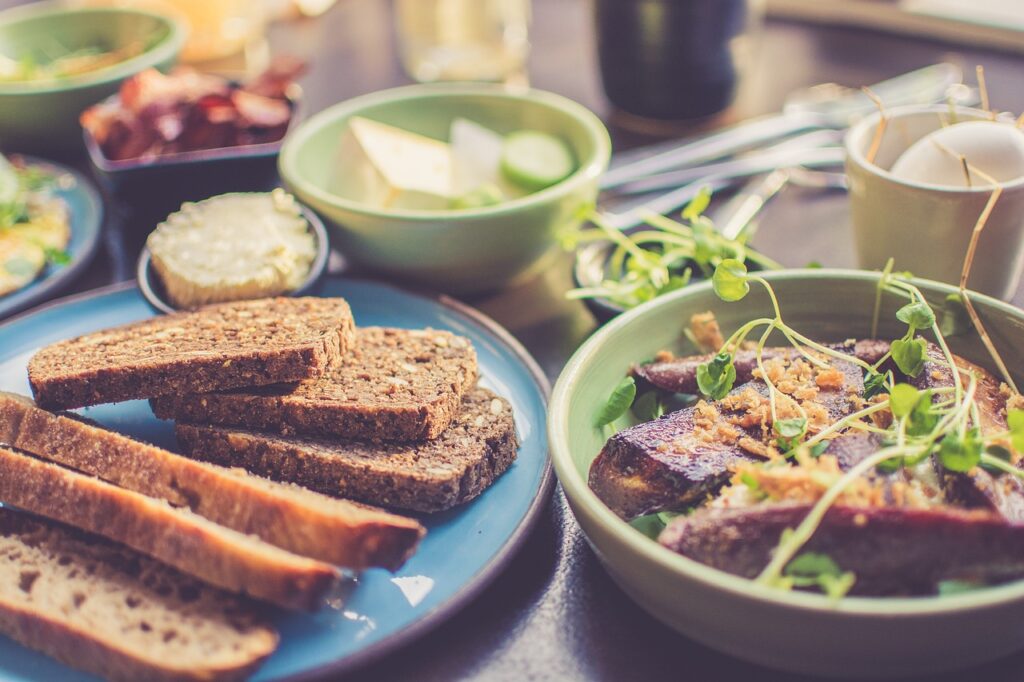
Being a mom is a full-time job in itself, and when you add in professional responsibilities, the day can feel overwhelming. One area that often suffers is meal planning. However, with a little organization and some strategic planning, you can provide your family with nutritious, delicious meals without spending hours in the kitchen. Here are some practical tips for healthy meal planning that can save time and reduce stress for busy moms.
1. Plan Your Meals Ahead
The foundation of healthy meal planning is organizing your meals in advance. Dedicate some time each week to plan your family’s meals and snacks.
Tips:
- Weekly Planner: Use a weekly meal planner to outline breakfast, lunch, dinner, and snacks. This helps in visualizing your week and making grocery shopping more efficient.
- Theme Nights: Simplify planning by assigning themes to different days (e.g., Meatless Mondays, Taco Tuesdays).
2. Make a Shopping List
Once you’ve planned your meals, create a comprehensive shopping list. This ensures you have all the necessary ingredients and helps you avoid impulse purchases.
Tips:
- Categorize Items: Organize your list by categories (e.g., produce, dairy, meats) to make grocery shopping quicker and easier.
- Stick to the List: Stay focused on your list to save time and money.
3. Prep in Advance
Prepping ingredients ahead of time can save you a lot of stress during the week. Spend a few hours on the weekend washing, chopping, and cooking components for your meals.
Tips:
- Batch Cooking: Cook large quantities of staples like rice, quinoa, or beans and store them in the fridge or freezer for quick meal assembly.
- Prep Veggies: Wash and chop vegetables in advance so they’re ready to toss into meals.
4. Utilize Time-Saving Appliances
Invest in kitchen gadgets that make cooking faster and easier, such as slow cookers, pressure cookers, and food processors.
Tips:
- Slow Cooker: Perfect for “set it and forget it” meals. Prepare ingredients in the morning, and dinner will be ready when you come home.
- Instant Pot: A versatile tool that can pressure cook, slow cook, sauté, and more, cutting down on overall cooking time.
5. Embrace Leftovers
Don’t let leftovers go to waste. They can be repurposed into new meals, saving you time and effort.
Tips:
- Plan for Leftovers: Cook extra portions of dinner to use for lunch the next day.
- Creative Repurposing: Transform leftover roasted chicken into chicken salad, soups, or tacos.
6. Opt for Simple and Nutritious Recipes
Choose recipes that are quick to prepare but still packed with nutrients. Focus on whole foods and balanced meals that include protein, healthy fats, and complex carbohydrates.
Tips:
- One-Pot Meals: Dishes like stews, casseroles, and stir-fries require minimal cleanup and can be loaded with veggies and proteins.
- Sheet Pan Dinners: Roast a combination of protein and vegetables on a single sheet pan for an easy and nutritious meal.
7. Stock Your Pantry with Essentials
A well-stocked pantry is a lifesaver for busy moms. Keep healthy staples on hand so you can whip up meals without needing a last-minute grocery run.
Tips:
- Pantry Staples: Items like whole grains, canned beans, tomatoes, nuts, and spices are versatile and have a long shelf life.
- Freezer Staples: Frozen fruits, vegetables, and pre-cooked grains can be quick additions to meals.
8. Involve the Family
Get your family involved in meal planning and preparation. This not only lightens your load but also encourages healthy eating habits.
Tips:
- Family Meetings: Discuss the weekly menu with your family and take their preferences into account.
- Cooking Together: Assign age-appropriate tasks to your children to help with meal prep. It’s a great way to teach them about nutrition and cooking.
9. Keep Healthy Snacks Accessible
Having healthy snacks readily available can prevent unhealthy eating habits and keep energy levels stable throughout the day.
Tips:
- Snack Stations: Create a designated spot in your fridge or pantry for healthy snacks like cut-up fruits, veggies, nuts, and yogurt.
- Portion Control: Pre-portion snacks into containers or bags for easy grab-and-go options.
10. Practice Flexibility
Life is unpredictable, especially with kids. Be flexible with your meal plans and have backup options ready for those particularly hectic days.
Tips:
- Freezer Meals: Prepare and freeze meals in advance that can be quickly reheated.
- Simple Go-Tos: Keep ingredients for a few easy, fail-safe meals like pasta with marinara sauce or veggie omelets.
Sample Meal Plan for a Week
Monday:
- Breakfast: Greek yogurt with granola and berries
- Lunch: Quinoa salad with chickpeas, cucumbers, tomatoes, and feta
- Dinner: Slow cooker chicken and vegetable stew
Tuesday:
- Breakfast: Overnight oats with almond milk, chia seeds, and banana
- Lunch: Turkey and avocado wrap with whole-grain tortilla
- Dinner: One-pot pasta with spinach, tomatoes, and lean ground beef
Wednesday:
- Breakfast: Smoothie with spinach, frozen berries, and protein powder
- Lunch: Mixed greens salad with grilled chicken, nuts, and a light vinaigrette
- Dinner: Baked salmon with roasted sweet potatoes and broccoli
Thursday:
- Breakfast: Whole-grain toast with avocado and a poached egg
- Lunch: Leftover chicken and vegetable stew
- Dinner: Stir-fried tofu with mixed vegetables and brown rice
Friday:
- Breakfast: Cottage cheese with pineapple and a sprinkle of flax seeds
- Lunch: Quinoa and black bean bowl with corn, bell peppers, and salsa
- Dinner: Homemade pizza with whole-wheat crust, veggies, and mozzarella
Saturday:
- Breakfast: Pancakes made with oat flour, topped with fresh fruit
- Lunch: Tuna salad on whole-grain bread with a side of carrot sticks
- Dinner: Slow cooker chili with lean ground turkey and kidney beans
Sunday:
- Breakfast: Scrambled eggs with spinach and whole-grain toast
- Lunch: Leftover stir-fried tofu and vegetables
- Dinner: Roast chicken with quinoa and a side of steamed green beans
Conclusion
Healthy meal planning doesn’t have to be time-consuming or stressful. By setting aside time for planning, utilizing batch cooking, and involving your family, you can ensure that nutritious meals are always on the table. Remember, it’s about progress, not perfection. Small steps towards better meal planning can make a big difference in your family’s health and well-being. Happy cooking!

